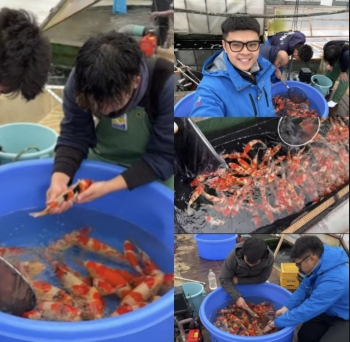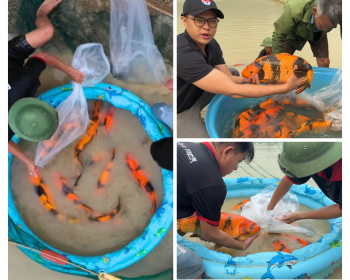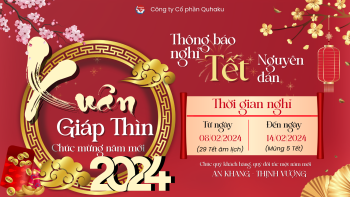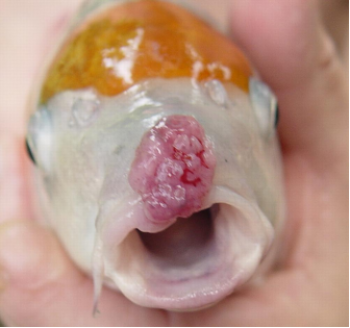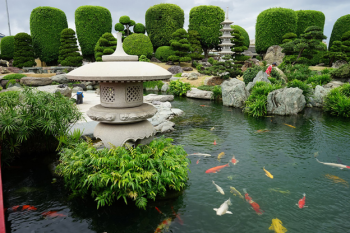The original noise of the Asagi Koi
Asagi Koi fish originated in Japan, and has been raised and bred since the 19th century. The name "Asagi" in Japanese means "light blue". The Asagi koi can be said to be one of the first koi lines to appear in Japan. One of the three Magoi breeds is the Asagi Magoi, the ancestor of the breeding of today's brightly colored koi fish.
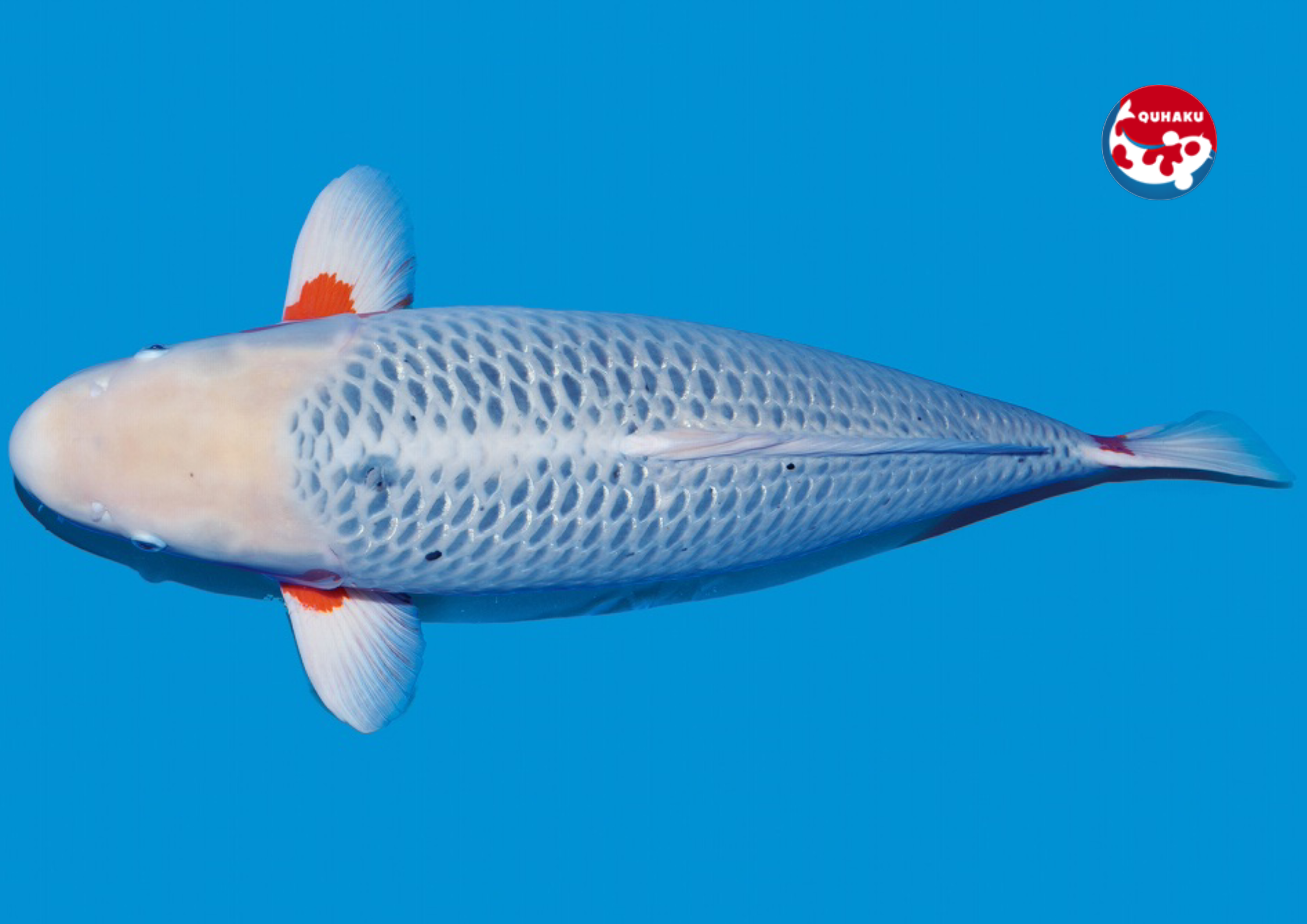
Features of Asagi Koi
Asagi Koi fish have a characteristic color of blue on the entire body, making it stand out and unique. This blue color is often referred to as "Asagi blue" and is one of the distinctive colors in the Koi breed. On their backs and fins there are red or orange stripes, this delicate combination of blue hues and vibrant patterns creates an attractive harmonious balance, which is a beautiful contrast.
The character of Asagi Koi fish is quite gentle, friendly, easy to keep and easy to care for. They prefer to live in quiet and noiseless environments. Asagi Koi are also very intelligent and capable of recognizing their owners. Asagi has a long life expectancy, can live 20 to 30 years or more if well cared for. This makes them a long-term companion to the owner.
In Japanese culture, Asagi Koi fish is considered a symbol of nobility, sustainability and good luck. To achieve the best color and shape for Asagi, the water in the aquarium must be properly secured and adjusted. In addition, diet and care are also important to maintain the health and beauty of Asagi Koi.
To care for and breed Asagi koi, the following basic principles should be followed:
- Water Quality Assurance: Ensure that the water in the aquarium is always clean and of good quality. The ideal temperature to nurture koi is from 25-30◦C, pH from 7.0 – 7.5.
- Provide balanced nutrition: Asagi koi fish need to be provided with a balanced and nutritious diet. Choose specialized food for koi fish and provide enough food to meet their nutritional needs.
- Protect fish from disease: Especially important is the prevention and control of common diseases in koi such as lice, bacteria and fungi. Ensure that the fish breeding environment is always clean and observes the necessary hygiene measures.
- Monitor development: Monitor the growth and health of Asagi koi. If you notice any abnormal signs such as loss of color, loss of energy, or other abnormal behavior, get tested and treated immediately.
Popular varieties of Asagi Koi fish and how to distinguish them
There are several different popular breeds of Koi Asagi, including:
- Asagi: The original Asagi Koi breed, which has a characteristic blue color on its back and red or orange stripes.
- Shusui: Koi Shusui is Asagi's version of Doitsu, Shusui has mesh-like blue and black dots that run along the sides of the dorsal fin down to the tail stalk..
- Tancho Asagi: There is a single red stain on the top of the head, forming the shape of the Japanese flag (tancho), along with the blue color and stripes on the back.
- Ginrin Asagi: Has a characteristic blue color and red or orange stripes, along with silver scales (gin rin) on the body.
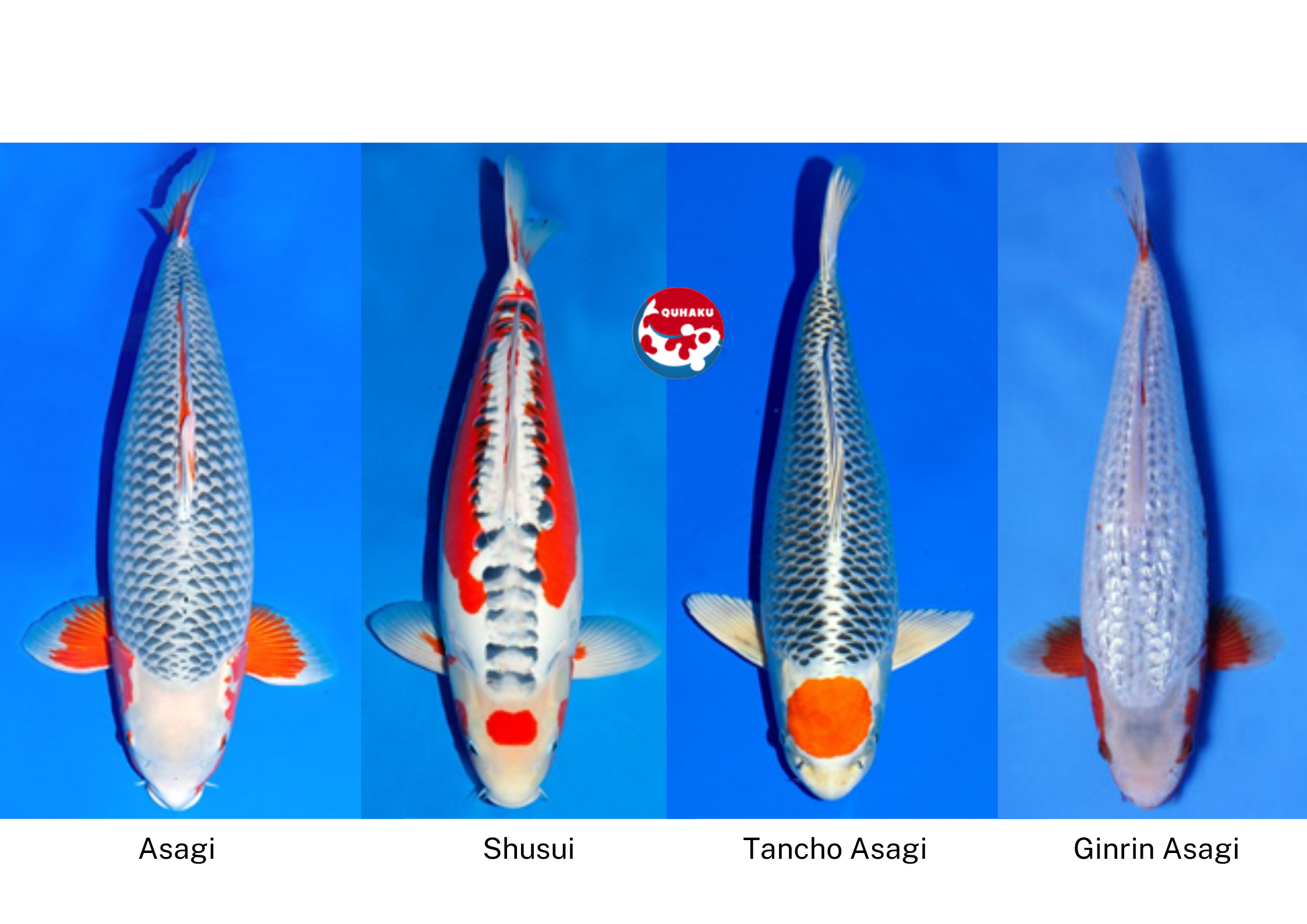
Popular varieties of Asagi Koi fish and how to distinguish them
Aboveis some basic information about the origin and characteristics of an Asagi Koi. Hopefully, the above information will help you in the process of learning Koi fish in general and Asagi series in particular.

